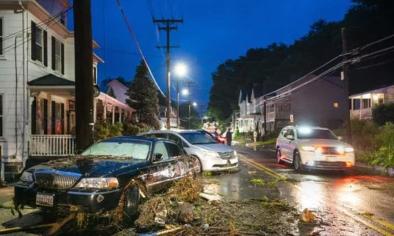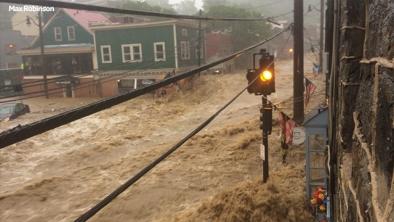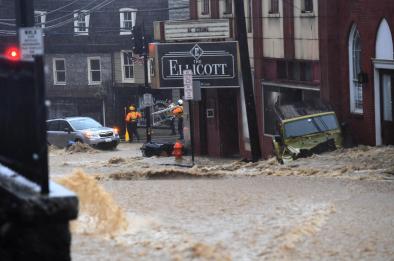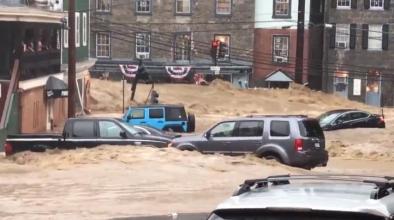Torrential rains bring epic flash floods in Maryland in late May 2018
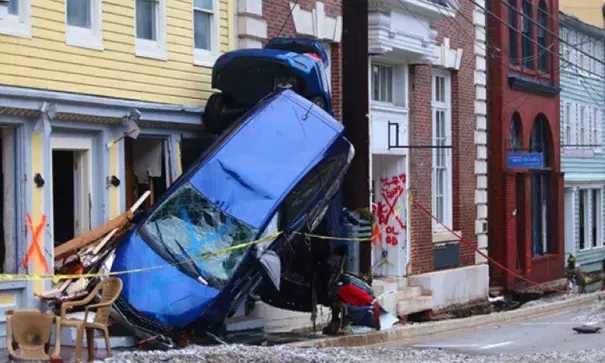
Less than two years after a massive flash flood destroyed large portions of the historic district of downtown Ellicott City, Maryland, even heavier rains led to a destructive repeat for the city in May 2018. While having two extreme rainfall and flooding events nearly back to back is not impossible, it certainly was improbable.
...
On May 27, an atmosphere laden with moisture was triggered to unleash a barrage of rain to the west of Baltimore, dropping more than six inches of rain in several hours. Rain gauges in Catonsville measured more than ten inches of rain, while Ellicott City saw around eight inches of rain.
Based on historical records, rainfall amounts this large over this short a period of time have a 0.1-0.2% chance of occurring in any given year. Or said another way, these extreme rains were a 1-in-500 to a 1-in-1000-year event.
Thanks to the local topography of the region, all of this water was funneled towards local tributaries and the Patapsco River. Sadly, Ellicott City is located smack dab in that funnel.
...
Once the water found its way to the river, water levels along the Patapsco River near Ellicott City skyrocketed. In under three hours, the river rose over 16.5 feet to a new record high of 24.36 feet. From 4:15- 5:30 p.m., the river rose nearly 3 feet every 15 minutes. The river went from normal to major flood stage in a little over an hour, an extremely short amount of time.
...
Two years ago in late July, a similar moisture-rich atmosphere dropped nearly half a foot of rain in just a couple of hours, leading to unbelievably damaging flash floods. At the time, that event was also called a one-in-a-thousand-year event, since statistics based on historical records estimate it had a 0.1% chance of occurring in any given year.
Remarkably, less than two years later, the same area observed even more rain in another event.
Don’t we have to wait a thousand years for another thousand year event?
No! But I completely understand the confusion. All a one-in-a-thousand-year event means is that at the start of any given year, there is a 1/1000 or 0.1% chance of a rainfall event of that magnitude occurring.
Related Content
